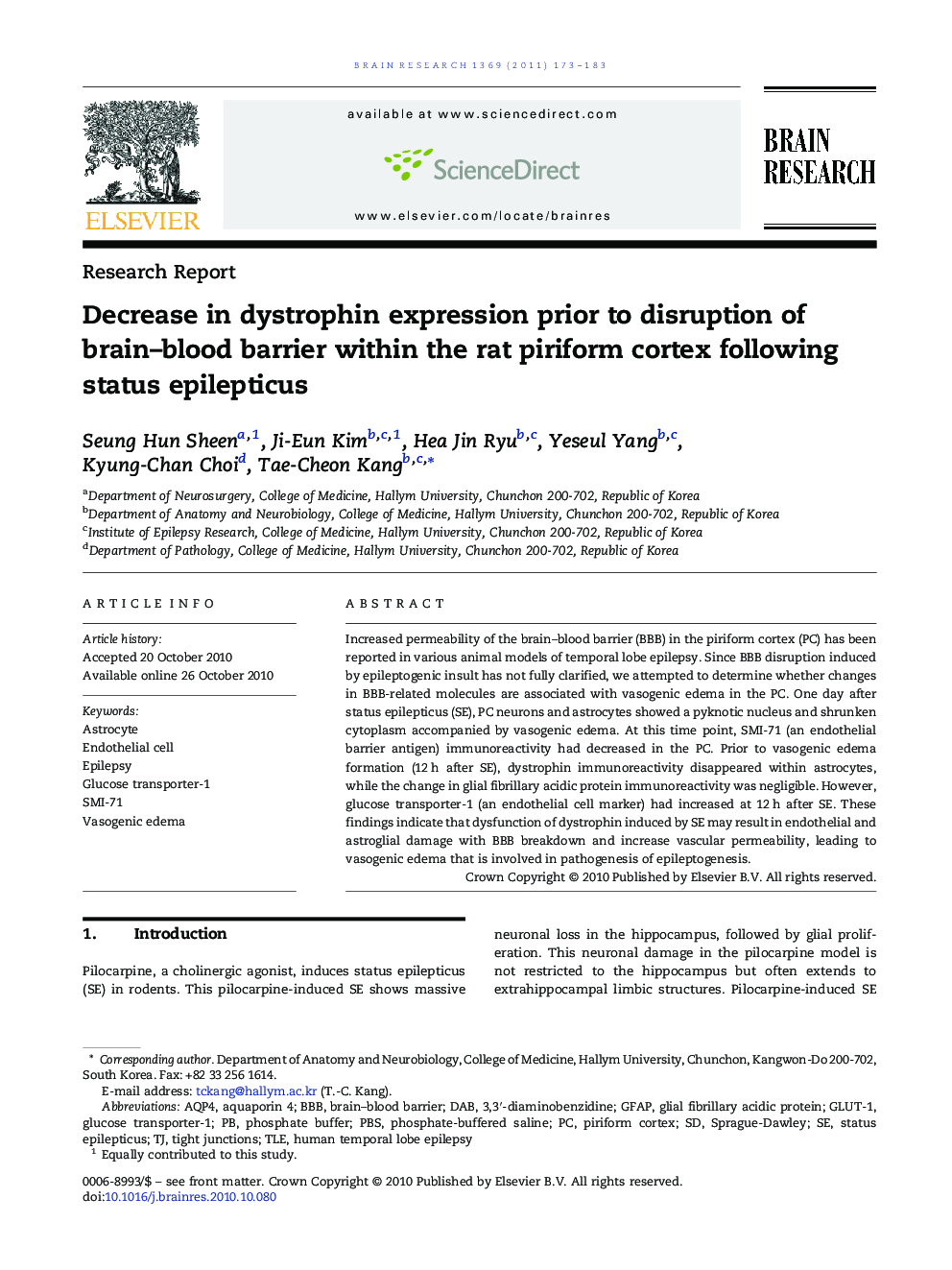| Article ID | Journal | Published Year | Pages | File Type |
|---|---|---|---|---|
| 6265391 | Brain Research | 2011 | 11 Pages |
Increased permeability of the brain-blood barrier (BBB) in the piriform cortex (PC) has been reported in various animal models of temporal lobe epilepsy. Since BBB disruption induced by epileptogenic insult has not fully clarified, we attempted to determine whether changes in BBB-related molecules are associated with vasogenic edema in the PC. One day after status epilepticus (SE), PC neurons and astrocytes showed a pyknotic nucleus and shrunken cytoplasm accompanied by vasogenic edema. At this time point, SMI-71 (an endothelial barrier antigen) immunoreactivity had decreased in the PC. Prior to vasogenic edema formation (12Â h after SE), dystrophin immunoreactivity disappeared within astrocytes, while the change in glial fibrillary acidic protein immunoreactivity was negligible. However, glucose transporter-1 (an endothelial cell marker) had increased at 12Â h after SE. These findings indicate that dysfunction of dystrophin induced by SE may result in endothelial and astroglial damage with BBB breakdown and increase vascular permeability, leading to vasogenic edema that is involved in pathogenesis of epileptogenesis.
Research Highlights⺠One day after status epilepticus (SE), the PC showed vasogenic edema. ⺠SMI-71 (an endothelial barrier antigen) immunoreactivity was decreased. ⺠However, glucose transporter-1 (an endothelial cell marker) was increased. ⺠Prior to edema formation, dystrophin immunoreactivity reduced within astrocytes. ⺠Disruption of dystrophin may increase vascular permeability leading vasogenic edema.
